LEAF: Tell us about you and your work as an artist.
Nicola: At the age of two I picked up my first brush. Thankfully, my Mum and Dad were very supportive and provided me with what every budding artist needs – a studio space, painting smock, paint, and some paper to paint on. I loved to paint and draw a wide range of subject matter but was especially drawn to dragons, cats, houses, and trees (yes trees!). My parents also gave me my first camera when I was eight or nine, and so I developed a keen interest in photography from a young age. I still draw and paint, but photography is my favourite way to capture and express my visions.
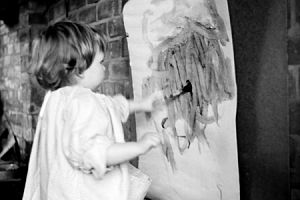
Nicola painting at the age of two, photo by Robin Woods
Some of my fondest childhood memories are of accompanying my parents and brother on hikes throughout the UK and then camping trips after we emigrated from England to Canada in 1978. Our expeditions were enhanced by my parents’ encyclopaedic knowledge and enthusiastic curiosity for all the flora and fauna we encountered. And if they didn’t know what we found they consulted the identification books they always brought with them. As a child, I didn’t always appreciate the barrage of information, but as an adult, I’m grateful that they instilled in me a lifelong love of learning.
Throughout my school years, I took art classes in drawing, painting, and sculpture. After high school I was accepted into art school at the University of Manitoba – an undergraduate degree in Fine Arts. I focused on painting and explored themes combining the figure with the natural world. After graduating, I continued painting and created bodies of work that included the human figure, elephants, dolphins, and landscapes.
In 1998, I decided to pursue a Master’s degree in Fine Art at Johnson State College and the Vermont Studio Centre (VSC). The experience had a huge impact on my work. I entered as a painter and, like many of the program’s students; I experimented with different media resulting in an expansion and transformation of my art practice. My creativity exploded when I abandoned my paintbrush and started using a photocopy machine to scan and create images of my own body. I embellished these images by using a needle and thread to stitch patterns on the image. This led to a technique I still employ in which I use a needle to puncture the surface of the film to allow for brighter concentrations of light suggestive of stars, molecules, and flows of energy.
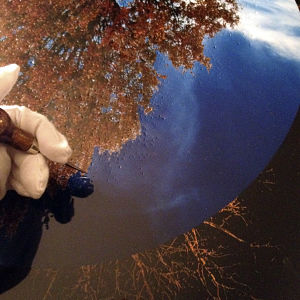
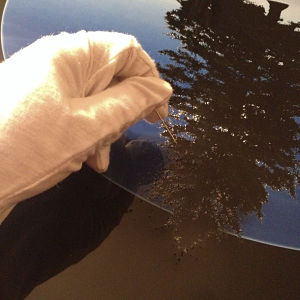
Process of puncturing film
It was a natural evolution to move from the photocopier to a camera to further explore my ideas relating to the body and light. For the next few years, I explored a wide range of subject matter including the figure, chakras, nature and the universe.
LEAF: What is The Trees Amongst Us about and what inspired you to create this project?
Nicola: The Trees Amongst Us builds on my previous exhibition in 2015 titled Arbor Vitae (Tree of Life). There are several reasons I was inspired to create both the work for Arbor Vitae and this current project. The first reason is that almost eight years ago I adopted a dog. I’d never had a dog before so I had no idea how much time I would spend walking outside. Over time, walking with Henry, I began to discover my neighbourhood. Previously, I hadn’t noticed the trees on the city streets, but the more I walked, the more I noticed them and their presence began to resonate with me. The second reason was getting a phone with a camera. Having a small, portable camera encouraged me to photograph my surroundings. Since I was often walking when there weren’t very many people on the streets, the trees became my companions. I started snapping pictures with my iPhone, and slowly started to build up a collection of photographs.
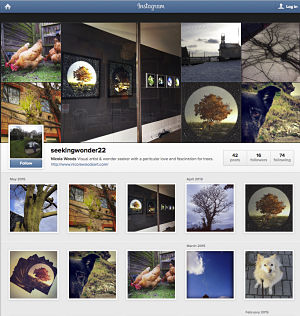
Nicola's Instagram page
After a while, I realized that I had the beginnings of a new series. A particular maple tree, north of where I live, captivated my attention. It has a magnificent yet battered canopy and strikes me as a symbol of perseverance. Despite being fenced in, surrounded by concrete, its roots competing with a fire hydrant and its branches encroached on by hydro lines, this tree continues to provide a haven for mammals, birds, and insects. I visit this tree frequently and have photographed it throughout the seasons.
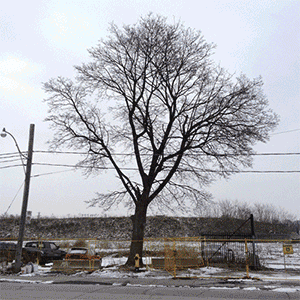
In my photo collage titled “Junction Behemoth 1”, I re-positioned and enlarged this maple tree so that it takes up the symbolic space it deserves, proudly growing out of the top of a building and still sporting its fire hydrant. This illuminated photograph was featured in my 2015 exhibit, Arbor Vitae (Tree of Life).
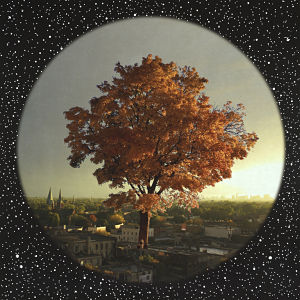
Junction Behemoth 1 (Backlit Fuji Trans - punctured
24 x 24 inches, Artwork photo © Brian Boyle.
Since then, my walks led me to notice the street trees on the busier streets that are part of the Adopt-a-Street-Tree program. This is such an amazing program! I admire the project’s approach to tree stewardship, especially the active teams of volunteers watering the trees. And so, a concept grew in my mind to both record and pay homage to this group of trees cared for by various businesses, organizations and individuals in the Junction. I want to honour how the trees knit the neighbourhood together. So that’s what prompted me to create the Trees Amongst Us photo project where each tree gets a portrait.
LEAF: What do you hope viewers will take away from The Trees Amongst Us?
Nicola: I hope it will have the same effect that the trees have on me -- that viewers become more mindful of the trees that live amongst us. And I think that the tree identification signs placed beside each tree and in business’ windows have increased awareness. I hope all this helps people realize how important trees are to us and that the urban forest is so vital to the health of the city. Hopefully, my art will inspire more people to adopt a street tree or join the volunteer watering team, and by doing so both the trees and the neighbourhood will benefit.
LEAF: How did you make the pieces? What was the process like?
Nicola: For this series, I’ve taken a different approach and I’m using a new material. This change in technique and materials was instigated by a group show that I participated in at Graven Feather – for their annual December exhibition they ask artists to make work using 6-inch wooden circles or rounds. While brainstorming as to what I would create, I envisioned the surface of the rounds as radiant and glowing. I knew that I couldn’t illuminate the round with light because it is wooden and opaque. I realized the only way to get the desired effect would be to cover the surface with metal leaf.
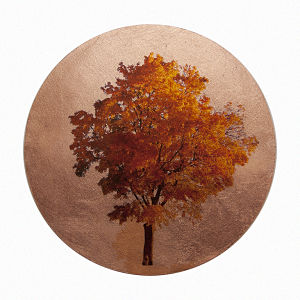
Copper Season, ink jet print on acetate, copper leaf, wood, 6-inch diameter 2016.
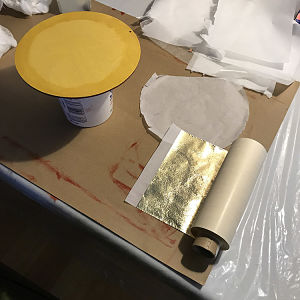
Application of metal leaf process
Applying the leaf is a bit of a tricky process, but I’ve enjoyed learning to work with it. As I did with my earlier work, I print onto transparent film and this allows the metal leaf to shine through the image. The result is interesting because the gold, silver and copper metallic backgrounds shimmer and change according to the light conditions, their appearance is similar to early photographic processes such as daguerreotypes and tintypes. These pieces also look like vintage hand coloured photographs because, in order to make the trees prominent in the streetscape, I’ve rendered the trees in colour and left the surrounding streetscapes in black and white.
LEAF: Was there anything unexpected you learned or experienced through the process of this project?
Nicola: I’ve learned a lot about trees. There are 139 trees in the Junction Adopt-a-Street-Tree program and so this process has really honed my skills with identifying particular trees. I’ve taken over 1000 photographs, so I’ve learned the hard way to keep my files organized. When I first starting photographing I was so excited to go out and shoot that I didn’t keep track of which tree was which. And I didn’t always photograph them in sequence, I’d turn around and see that the light was great so I’d take a shot and then later when I was going through the images it was sometimes tricky to match the photos with the right tree. This has resulted in me being much more observant of the identifying features of trees. I had no idea that we have so many honey locust trees in my neighbourhood!
This project has given me great hope, seeing that people are willing to help trees. Trees don’t have a voice, they are amongst us, and we need them. Urban trees, in particular, need us - they really need our help. I’m moved to see how much dedication and care there is for urban trees. That’s the most important thing that I’ve learned, we all need to participate and come together to help keep the urban forest in the best possible shape it can be.
LEAF: Where can people see The Trees Amongst Us?
Nicola: The exhibit, which is part of the Scotiabank CONTACT Photography Festival, will be on display at Earl Selkirk Gallery, ARTiculations located at 2928 Dundas St West. The exhibit runs from May 3-27, 2018. The opening reception is Saturday May 5th, 4-6 pm, and the gallery hours Mon - Fri 11-6, Sat 11-5 + Sun 12-5. For more details check articulations.ca
Erin MacDonald is LEAF’s Community Programs Manager.
The Adopt-a-Street-Tree Program is a joint collaboration between LEAF, the City of Toronto, Green 13, the Junction BIA the Junction Residents' Association and the Toronto Field Naturalists.
